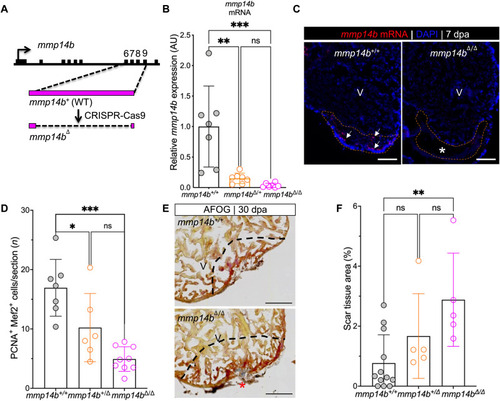Fig. 2.
- ID
- ZDB-FIG-231202-2
- Publication
- Zlatanova et al., 2023 - An injury-responsive mmp14b enhancer is required for heart regeneration
- Other Figures
- All Figure Page
- Back to All Figure Page
|
Inactivation of the ( |

